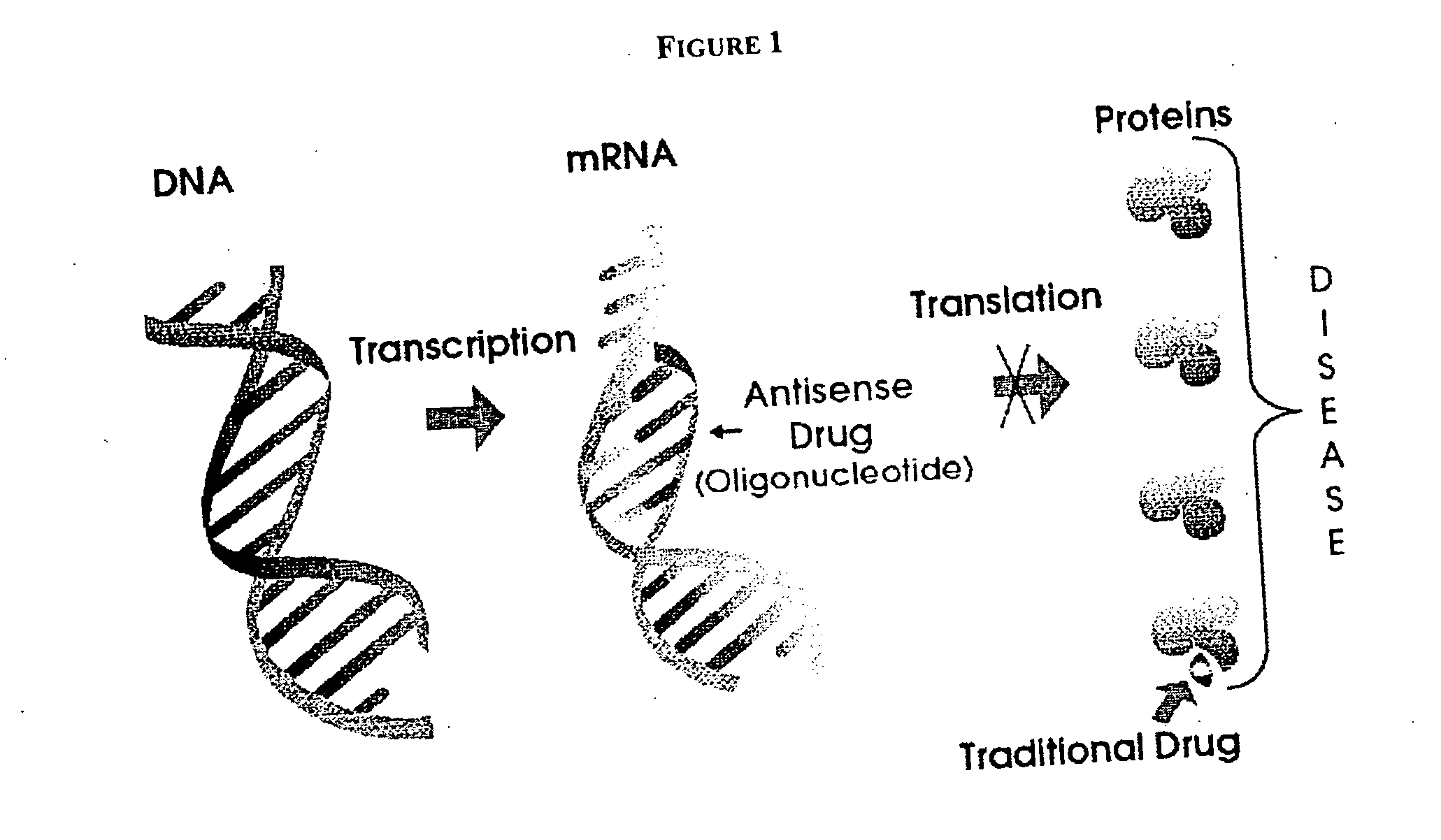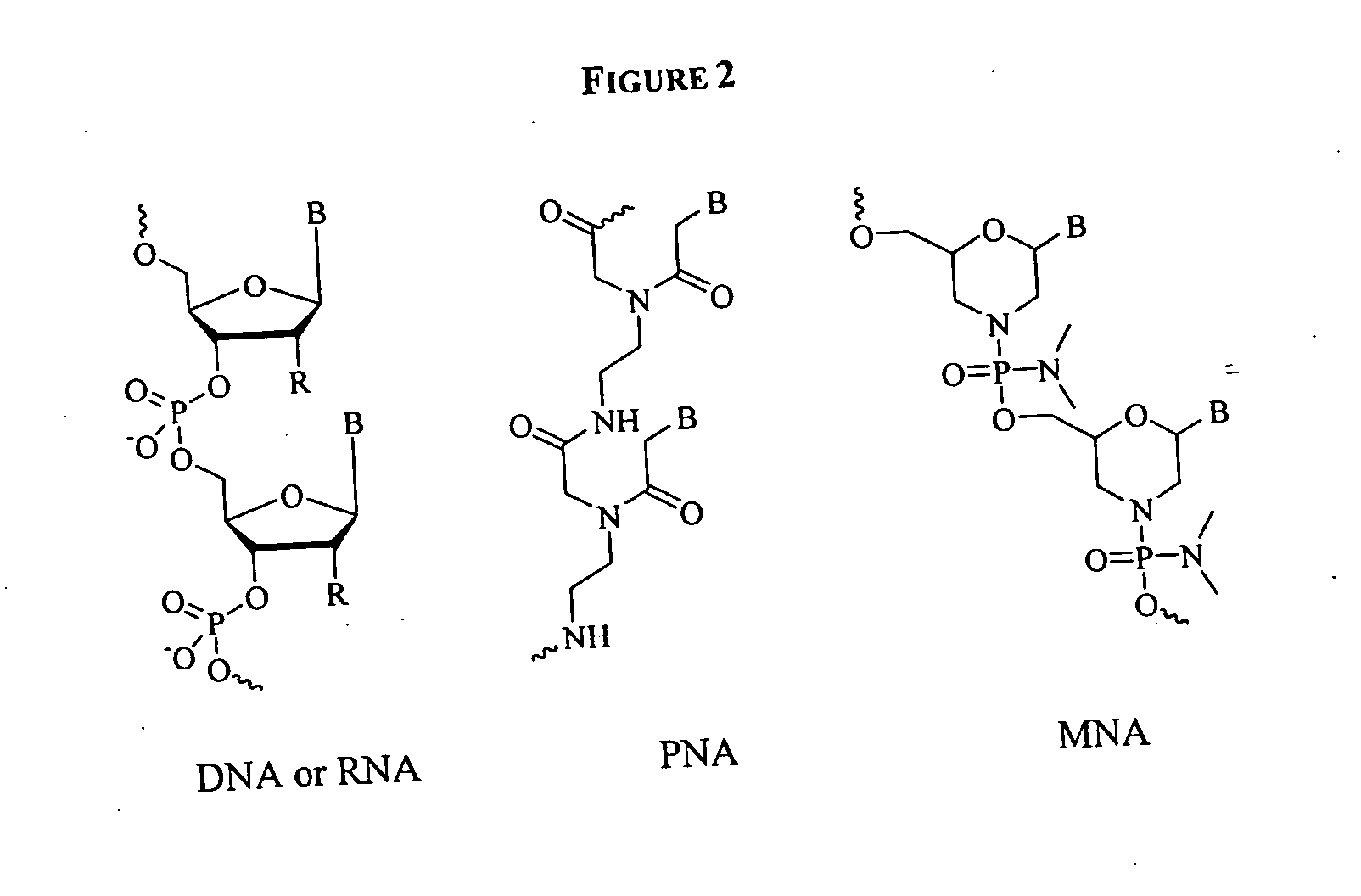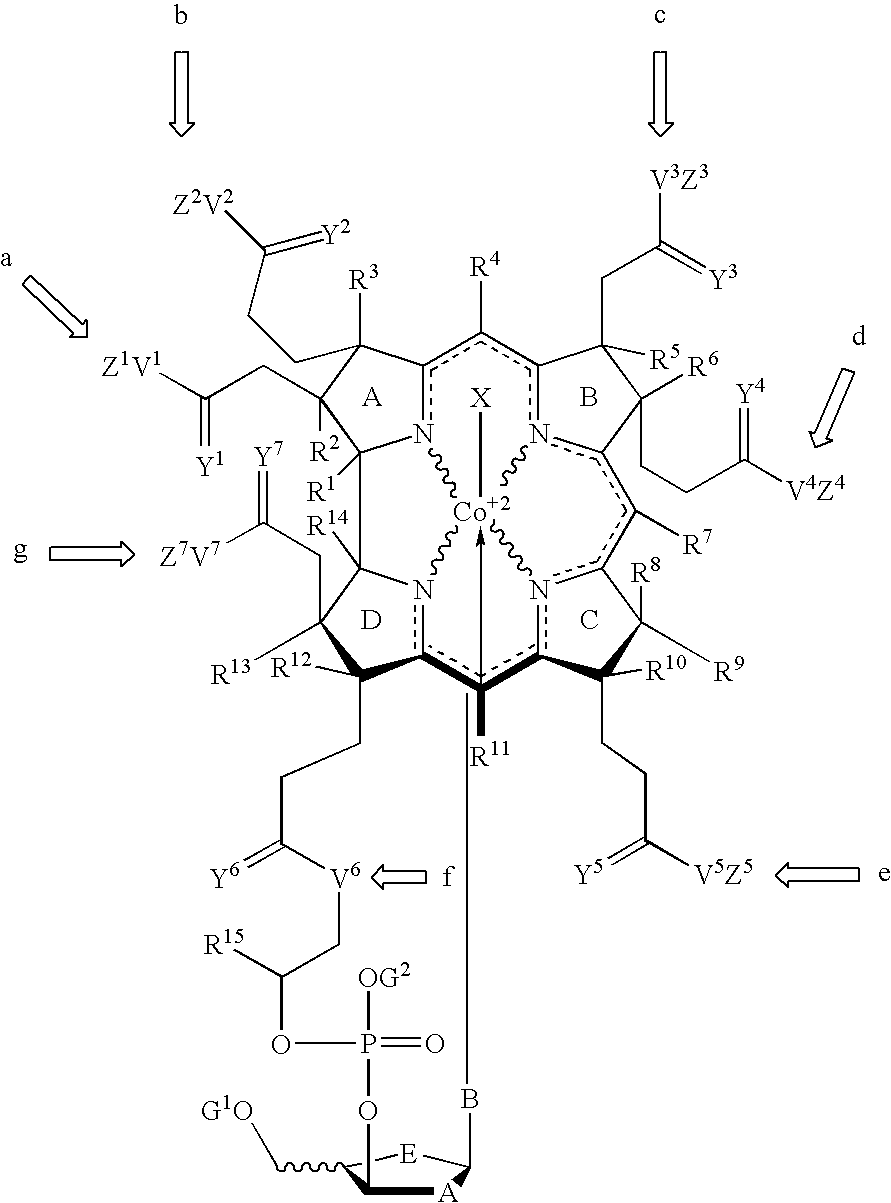Cobalamin mediated delivery of nucleic acids, analogs and derivatives thereof
a technology of cobalamin and nucleic acids, applied in the direction of biocide, genetic material ingredients, organic chemistry, etc., can solve the problems of insufficiently addressing the problem of targeting the nucleic acid sequence, ineffective delivery of pna oligomers, and difficult roads, so as to increase the stability of the gene-mediating complex and prevent significant uncoupling of nucleic acids
- Summary
- Abstract
- Description
- Claims
- Application Information
AI Technical Summary
Benefits of technology
Problems solved by technology
Method used
Image
Examples
11-20
Subembodiments Any one of subembodiments 1-10, wherein the linker has a substantially constant molecular weight.
[0208] Subembodiments 21-30: Any one of subembodiments 1-10, wherein the linker is a polyamine of the following chemical structure: NR′(alkylene-NR′)nalkyleneNR′, wherein n is from 1 to 20, the carbon length of alkylene can vary within the n units and each R′ is independently hydrogen, lower alkyl or T.
31-40
Subembodiments Any one of subembodiments 1-10, wherein the linker is spermine, spermidine, decamethylene tetraamine or pentamethylene hexamine.
III. Definitions for the Invention
[0209] The following definitions and term construction are intended, unless otherwise indicated. Specific and preferred values listed below for radicals, substituents and ranges, are for illustration only; they do not exclude other defined values or other values within defined ranges for the radicals and substituents. Explanations of terms below if not used elsewhere in the text are considered embodiments of the invention.
[0210] A wavy line in the chemical structures herein indicates either a dative or covalent bond such that there are three covalent Co—N bonds and one dative Co—N bond, wherein, in the case of the dative bond, the valance of nitrogen is completed either with a double bond with an adjacent ring carbon or with a hydrogen.
[0211] A dotted line in the chemical structures herein indicates eith...
example
Example 1
Preparation of Cyanocobalamin-b-(4-aminobutyl)amide
[0446] A mixture containing cyanocobalamin-b-carboxylic acid (1.0 g, 0.6 mmol), hydroxybenzotriazole (0.81 g, 6 mmol) and 1,4-diaminobutane dihydrochloride (4.8 g, 30 mmol) in 100 ml of water was adjusted to pH 7.8. 1-Ethyl-3-(3′-dimethylaminopropyl)carbodiimide (1.26 g, 6.6 mmol) was then added, the pH was adjusted to 6.4 and the reaction stirred at room temperature for 24 h. TLC on silica gel using n-butanol-acetic acid water (5:2:3) showed the reaction to be complete. Cyanocobalamin-b-(4-aminobutyl)amide was extracted into 92% aqueous phenol and the phenol layer was washed several times with equal volumes of water. To the phenol extract were added 3 volumes of diethylether and 1 volume of acetone. The desired cobalamin was removed from the organic phase by several extractions with water. The combined aqueous layers were extracted three times with diethylether to remove residual phenol, concentrated to approximately 200...
PUM
| Property | Measurement | Unit |
|---|---|---|
| pharmaceutical composition | aaaaa | aaaaa |
| nucleic acid sequence | aaaaa | aaaaa |
| hydrophilic character | aaaaa | aaaaa |
Abstract
Description
Claims
Application Information
 Login to View More
Login to View More - R&D
- Intellectual Property
- Life Sciences
- Materials
- Tech Scout
- Unparalleled Data Quality
- Higher Quality Content
- 60% Fewer Hallucinations
Browse by: Latest US Patents, China's latest patents, Technical Efficacy Thesaurus, Application Domain, Technology Topic, Popular Technical Reports.
© 2025 PatSnap. All rights reserved.Legal|Privacy policy|Modern Slavery Act Transparency Statement|Sitemap|About US| Contact US: help@patsnap.com



